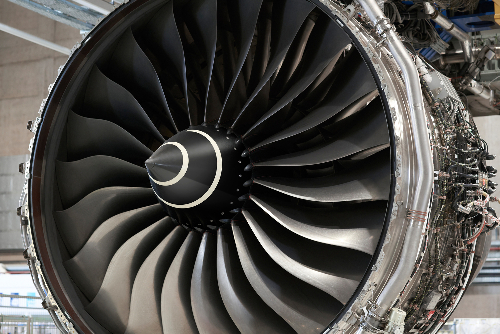NVIDIA-RR industrial quantum breakthrough
- May 23, 2023
- William Payne

NVIDIA and Rolls-Royce have announced a breakthrough in the use of quantum computing in industrial design and development. The two companies, together with quantum computing specialist Classiq have created the world’s largest quantum computing circuit for computational fluid dynamics (CFD). This is a circuit that can measure 10 million layers deep with 39 qubits.
Using GPUs, Rolls-Royce is developing quantum-based industrial design simulations despite current limitations with quantum computing. Rolls-Royce plans to use the new for modelling the performance of jet engine designs in simulations that use both classical and quantum computing methods.
Rolls-Royce and its partner, Israel-based Classiq, designed the circuit using Classiq’s synthesis engine and then simulated it using NVIDIA A100 Tensor Core GPUs. The speed and scale of the process was made possible by NVIDIA cuQuantum, a software development kit that includes optimised libraries and tools to speed up quantum computing workflows.
“Designing jet engines, which are one of the most complicated devices on earth, is expensive and computationally challenging,” said Ian Buck, vice president of hyperscale and HPC at NVIDIA. “NVIDIA’s quantum computing platform gives Rolls-Royce a potential path to tackle these problems head-on while accelerating its research and future development of more efficient jet engines.”
“Applying both classical and quantum computing methods directly to the challenge of designing jet engines will help us accelerate our processes and perform more sophisticated calculations,” said Leigh Lapworth, computational science fellow at Rolls-Royce.
NVIDIA offers a unified computing platform for speeding breakthroughs in quantum research and development across disciplines. The NVIDIA Grace Hopper Superchip, which combines the performance of NVIDIA Hopper architecture GPUs with NVIDIA Grace CPUs, is designed for giant-scale quantum simulation workloads.
The NVIDIA NVLink-C2C interconnect is designed to make classical systems built with the superchip optimally suited to link to quantum processors, or QPUs. With a total 600GB of fast-accessible memory per node, Grace Hopper enables the quantum ecosystem to push these simulations to an even larger scale.
Grace Hopper is deployed in DGX Quantum, a GPU-accelerated quantum computing system combining quantum computing with state-of-the-art classical computing. NVIDIA also provides developers with NVIDIA CUDA Quantum, an open-source programming model that links GPUs and QPUs.
The Jülich Supercomputer Centre, one of Europe’s largest facilities for quantum computing, has announced plans to build a quantum computing lab with NVIDIA, highlighting the growing importance of hybrid quantum-classical computing systems. The lab will help developers advance the field of quantum computing with tools like CUDA Quantum.
QPU builder ORCA Computing has announced that has integrated CUDA Quantum, combining its photonic quantum computer with GPUs for machine learning. TensorFlow Quantum and TorchQuantum — two popular quantum machine learning frameworks — now also integrate cuQuantum. According to NVIDIA, the majority of the world’s quantum computing software today supports GPU acceleration with the NVIDIA quantum platform.




